In the animal kingdom, adaptation is not just a matter of survival—it’s a showcase of evolutionary marvels that put even the most imaginative sci-fi plots to shame. From creatures that can change their hue at will to those that switch genders for better mating opportunities, the natural world is teeming with examples of incredible biological flexibility. You might find yourself envying these animals’ abilities to transform, responding to environmental cues in ways that are as fascinating as they are practical. Here are 12 animals whose shape-shifting skills would make any superhero jealous.
1. Cuttlefish
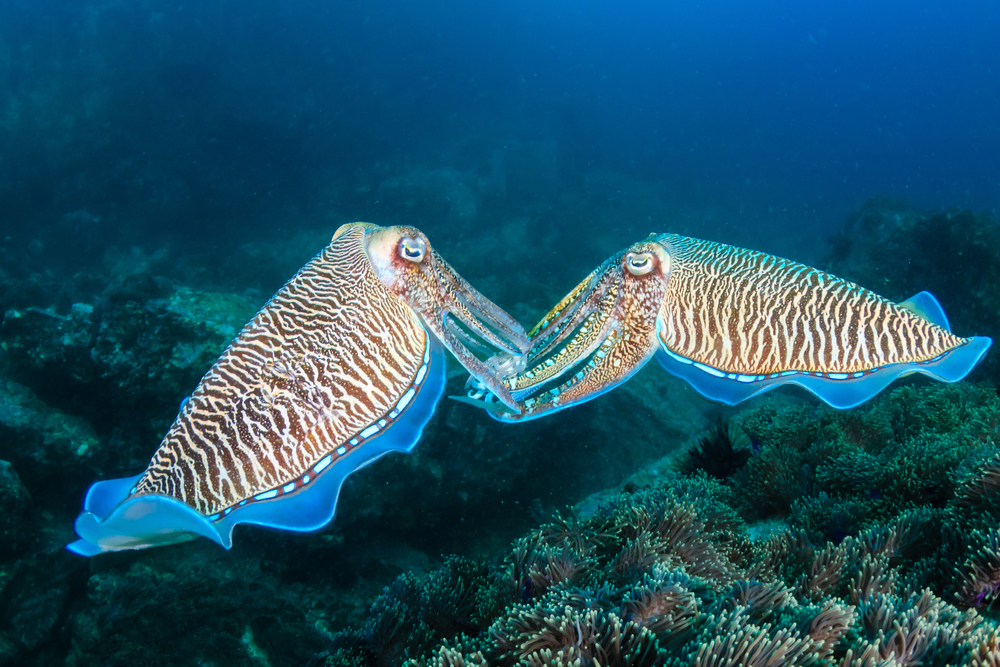
Cuttlefish, often dubbed the “chameleons of the sea,” have an extraordinary ability to change both color and texture. They use specialized cells called chromatophores, leucophores, and iridophores to mimic their surroundings, a trick that helps them evade predators and communicate. Watching a cuttlefish adapt to a new environment can feel like witnessing a live magic show, complete with instant costume changes and dramatic flair. Their camouflage skills are so advanced that they can even replicate textures, making them nearly invisible to the untrained eye.
Beyond their camouflaging capabilities, cuttlefish are highly intelligent, known for problem-solving and possessing a robust memory. Researchers have found that these cephalopods can learn from observation, a trait that many people might wish to emulate. They also exhibit playful behavior, an indication of their complex nervous systems. It’s not just their transformative abilities that captivate scientists and nature enthusiasts alike; it’s their unique blend of intelligence and adaptability.
2. Chameleons

Chameleons are famously known for their ability to change color, a skill that goes beyond mere camouflage. Contrary to popular belief, they don’t change color to blend into their surroundings but instead to regulate body temperature and communicate with other chameleons. According to a study published in *Nature Communications*, these reptiles use a complex arrangement of nanocrystals within their skin cells to reflect light differently, achieving their colorful displays. Imagine having a mood ring on your skin, with the capacity to speak volumes without uttering a word.
In addition to their color-changing prowess, chameleons have a remarkable 360-degree vision thanks to their independently rotating eyes. This means they can look forward and backward simultaneously, a talent that you might find handy during awkward social situations. Their tongues are another unique feature, capable of shooting out at speeds that would put a professional baseball pitcher to shame. These adaptations make chameleons not just masters of disguise, but also incredibly efficient hunters.
3. Clownfish

Clownfish are perhaps best known for their vibrant colors and starring role in a certain animated film, but their ability to change gender is equally fascinating. All clownfish are born male, with the dominant fish in a group becoming female. This gender transformation is a social adaptation, allowing them to maximize their breeding potential—a strategy that speaks to a flexible approach to life’s challenges. According to marine biologist John E. Randall, this sequential hermaphroditism is a sophisticated survival mechanism in the unpredictable marine ecosystem.
These fish live in symbiotic relationships with anemones, which provide shelter and protection. In return, clownfish offer cleaning services, removing debris and parasites from their host. This mutualistic partnership exemplifies how cooperation in nature can be just as crucial as competition. Clownfish are proof that sometimes, the most effective survival strategies are based not just on individual prowess but on social harmony.
4. Sea Hares
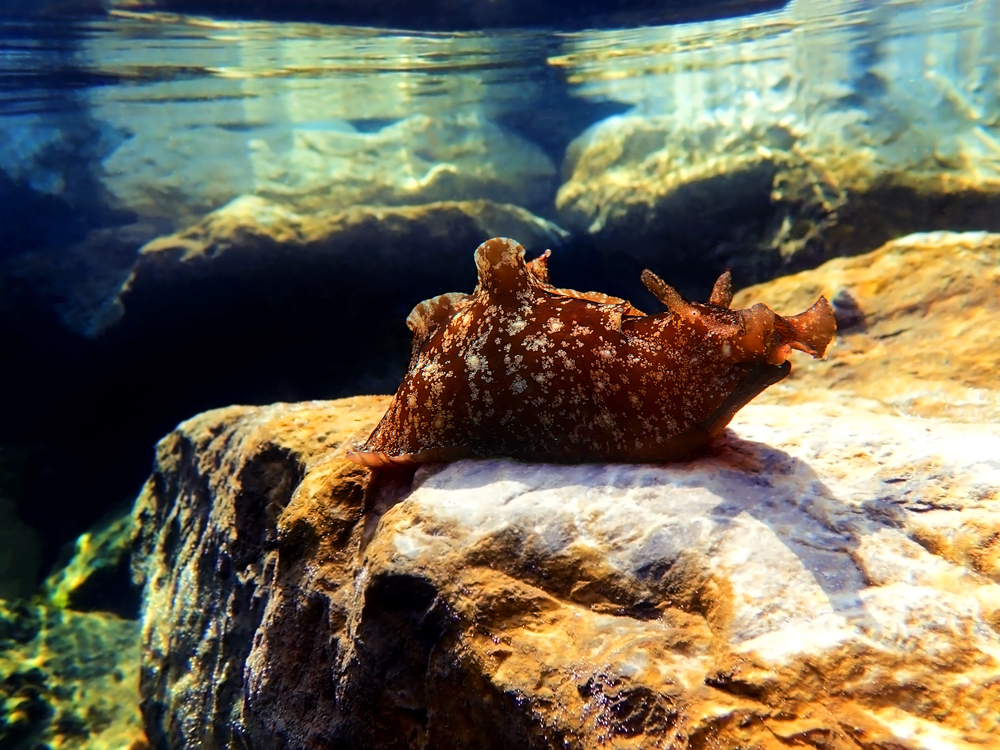
Sea hares, with their unassuming slug-like appearance, might not look like shape-shifters at first glance. However, they possess an amazing ability to change both color and shape, often taking on the hues of their diet to better blend into their surroundings. This ability to adopt various shades is a defense mechanism, helping them avoid predators in the vast ocean. It’s like having a closet full of outfits for every occasion, ready to help you fit into any environment seamlessly.
Besides their color-changing superpowers, sea hares can release a cloud of ink to confuse predators, reminiscent of a magician disappearing in a puff of smoke. This ink not only provides a smoke screen but also contains chemicals that can dull the predatory senses. Their soft, flexible bodies allow them to squeeze into tight crevices, an enviable skill when you consider how often you wish you could just “disappear” from a situation. Sea hares are a reminder that sometimes, the greatest defense is simply not being seen.
5. Parrotfish
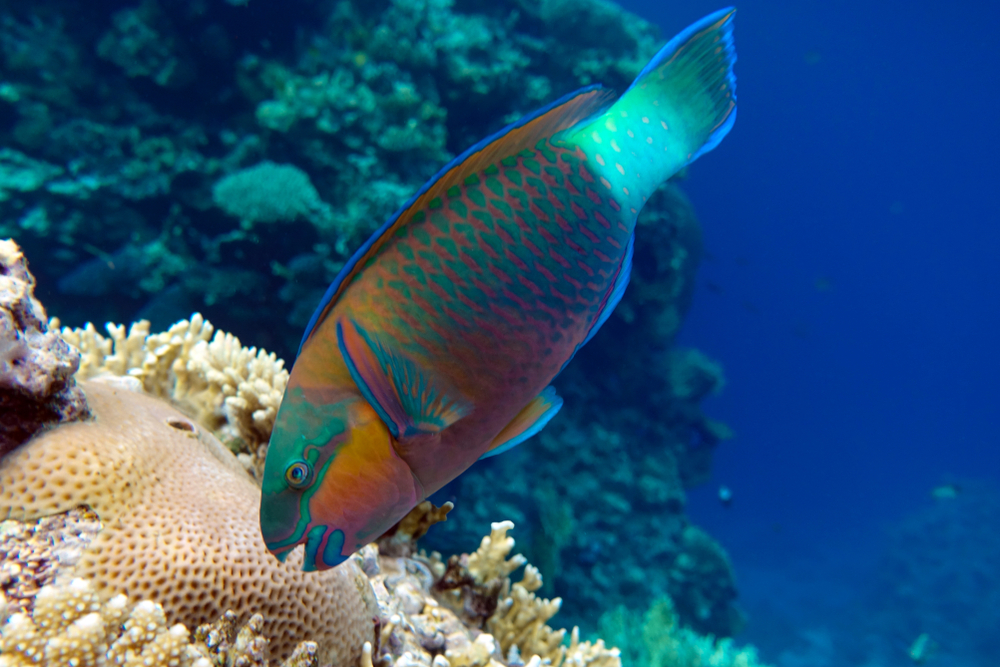
If you’ve ever seen a parrotfish, you know they’re eye-catching with their vibrant colors and distinctive beak-like teeth. However, these fish have more than just visual appeal—they can change gender as well. Research published in the *Journal of Fish Biology* highlights that many species of parrotfish begin life as females and later transition to males, a strategy that allows them to adapt to population dynamics. This remarkable adaptability ensures that they can maintain balanced social structures within their reefs.
In addition to their gender-switching abilities, parrotfish play a critical role in maintaining the health of coral reefs. They graze on algae that can otherwise suffocate corals, effectively acting as underwater gardeners. As they munch on algae-covered rock, they also expel coral sand, contributing to the formation of beautiful white sandy beaches. So next time you’re lounging by the shoreline, you might just have a school of parrotfish to thank for the pristine sand beneath your toes.
6. Flatfish
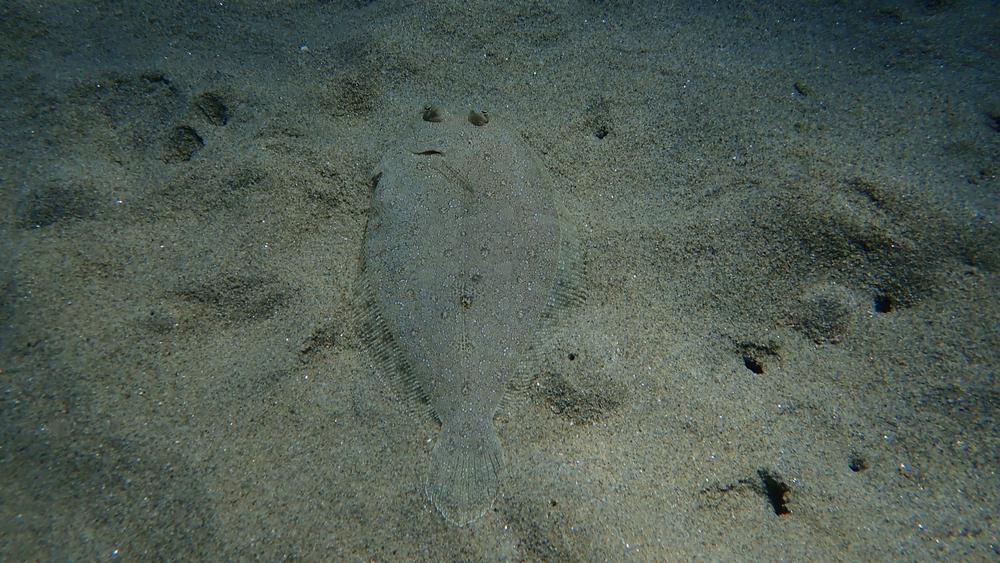
Flatfish, including flounder and sole, are masters of morphological transformation. They undergo a dramatic metamorphosis during their development, with one eye migrating to join the other on the same side of the head. This unique body plan allows them to lie flat against the ocean floor, hidden from both predators and prey. Think of it as the ultimate game of hide-and-seek, where staying out of sight ensures you win.
This lateral positioning isn’t just for evasion—it also enhances their hunting abilities. Flatfish are ambush predators, waiting patiently for unsuspecting prey to pass by before striking with lightning speed. Their ability to adapt physically to such a specialized lifestyle is a testament to nature’s resourcefulness. It’s a reminder that sometimes, a new perspective—quite literally—can open up a world of possibilities.
7. Wrasses
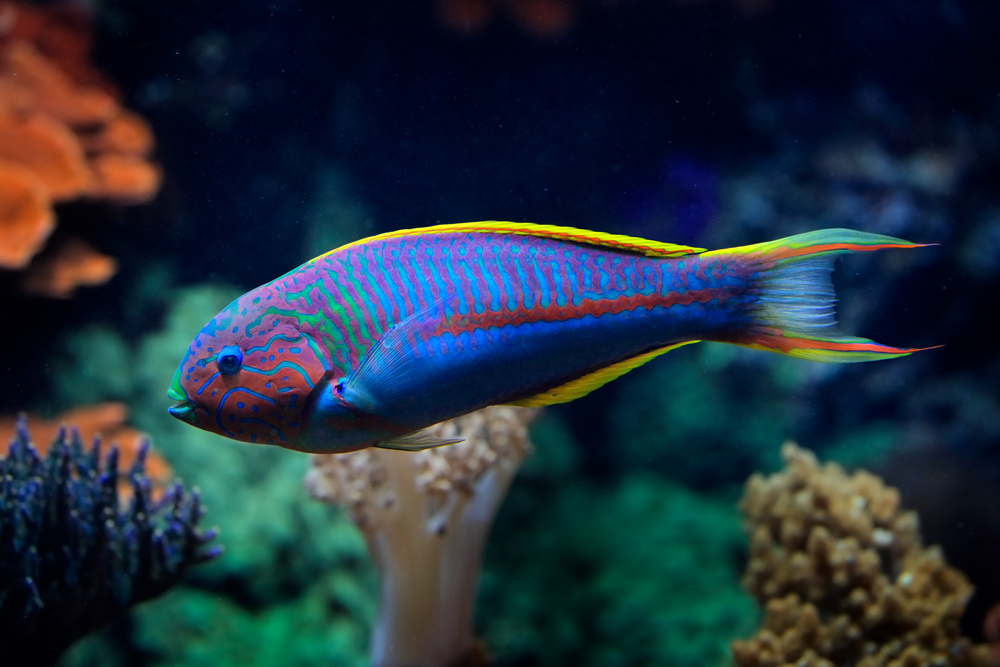
Wrasses are another example of fish that routinely undergo gender transformation as part of their life cycle. Many wrasse species begin life as females and, when conditions necessitate, transform into males. This ability is particularly useful in social systems where the largest male holds territories and mates with multiple females. A study highlighted in *Marine Biology Research* points out that this sequential hermaphroditism is a highly efficient reproductive strategy, allowing for optimal use of resources.
Beyond their fascinating reproductive behavior, wrasses are known for their vibrant colors and active role in the ecosystem as “cleaner fish.” They pick parasites off larger fish, improving the health of their marine neighbors. This mutualistic relationship underlines the importance of cooperation in nature, showcasing how interconnected the web of life truly is. Wrasses remind us that adaptability often involves not just changing oneself but also enhancing relationships with others.
8. Starfish

Starfish, or sea stars, offer a unique take on regeneration and transformation. These echinoderms can regenerate lost arms, a process that not only aids in survival but also allows them to reproduce asexually. Beyond their regenerative abilities, starfish exhibit a remarkable range of colors and patterns, which can serve as camouflage or warning displays. Imagine being able to regrow a limb just as easily as replacing a lost item of clothing.
Starfish play a crucial role in marine ecosystems, often considered keystone species due to their impact on the environment. They feed on mollusks, controlling the population and preventing any single species from dominating. This balance ensures biodiversity, which is key to a healthy ecosystem. Starfish are a reminder that even the simplest creatures can have a profound impact on their surroundings.
9. Frogs
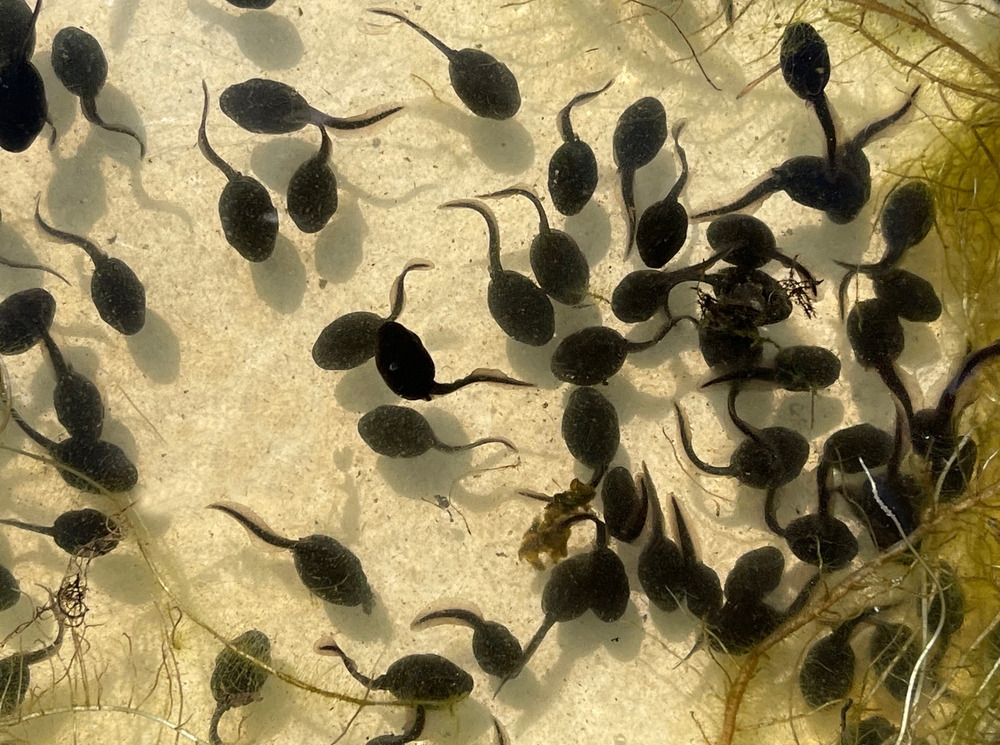
Frogs are amphibians well-known for their life cycle metamorphosis, transforming from tadpoles to fully-developed adults. This dramatic shift in form is essential for their transition from an aquatic to a terrestrial lifestyle. However, some species, like the African reed frog, take transformation a step further by changing color to regulate their temperature and communicate. Imagine having a built-in thermal regulator that doubles as a social signal—talk about multi-tasking!
Beyond their transformative life cycle, frogs are ecological bellwethers, sensitive to environmental changes that often go unnoticed by other species. Their skin can absorb water and air, making them particularly vulnerable to pollutants and climate change. This sensitivity makes them crucial indicators of ecosystem health. Frogs are a vivid reminder of the intricate connections between life stages and environmental conditions.
10. Octopuses
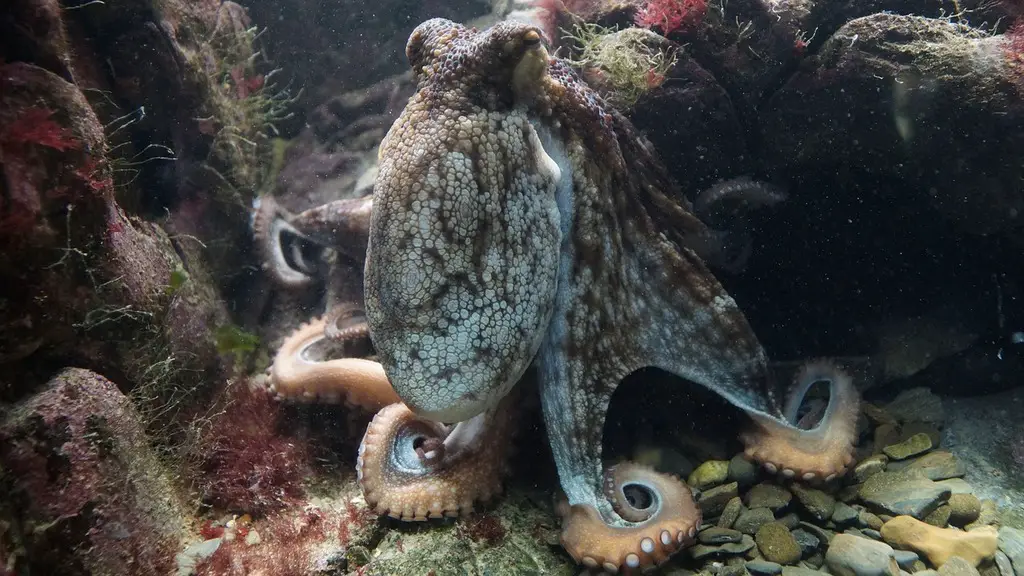
Octopuses are renowned for their intelligence and extraordinary ability to change both color and texture. Using specialized cells called chromatophores, they can mimic the appearance of their surroundings, a talent that aids in both hunting and predator evasion. Watching an octopus shift from rocky outcrops to sandy seabeds feels like witnessing an underwater magic act. Their skin is essentially a living canvas, capable of depicting a wide array of natural artistry.
In addition to their visual adaptability, octopuses are problem solvers, known for their ability to navigate complex mazes and open jars with ease. They exhibit curiosity and have been observed using tools, a trait that highlights their cognitive capabilities. These cephalopods challenge our understanding of intelligence, reminding us that brains come in many shapes and sizes. With an octopus, you get both brains and beauty, wrapped in an ever-changing package.
11. Anoles

Anoles, small lizards often found in warm climates, are masters of color change, frequently shifting their hue to regulate body temperature and communicate. Unlike chameleons, which are known for their dramatic color changes, anoles subtly adjust their shade to blend in with their environment or express dominance. It’s like having an emotional barometer on your skin, reacting to both external and internal stimuli. Their ability to change color makes them fascinating subjects for studying behavior and environmental adaptation.
Beyond their color-changing abilities, anoles are agile creatures, skilled at navigating their arboreal habitats. Their sticky toe pads allow them to cling to vertical surfaces and even run on ceilings. This adaptability in locomotion is crucial for escaping predators and finding food. Anoles remind us that sometimes, the most effective adaptations are those that allow us to both stand out and blend in, depending on the situation.
12. Nudibranchs

Nudibranchs, often referred to as sea slugs, boast some of the most vibrant and diverse coloration in the animal kingdom. They use their dazzling appearances not just for show, but as a warning to potential predators about their toxicity. These color displays are not static; nudibranchs can change shades based on their diet and environmental conditions. It’s akin to wearing your culinary experiences on your sleeve, broadcasting your recent meals to the world.
In addition to their color-changing capabilities, nudibranchs are fascinating for their reproductive behavior. They are hermaphrodites, possessing both male and female reproductive organs, which allows them to mate with any other adult nudibranch. This flexibility in reproduction ensures that even in sparse populations, they can continue to thrive. Nudibranchs demonstrate that sometimes, being colorful and versatile is the best strategy for survival.
